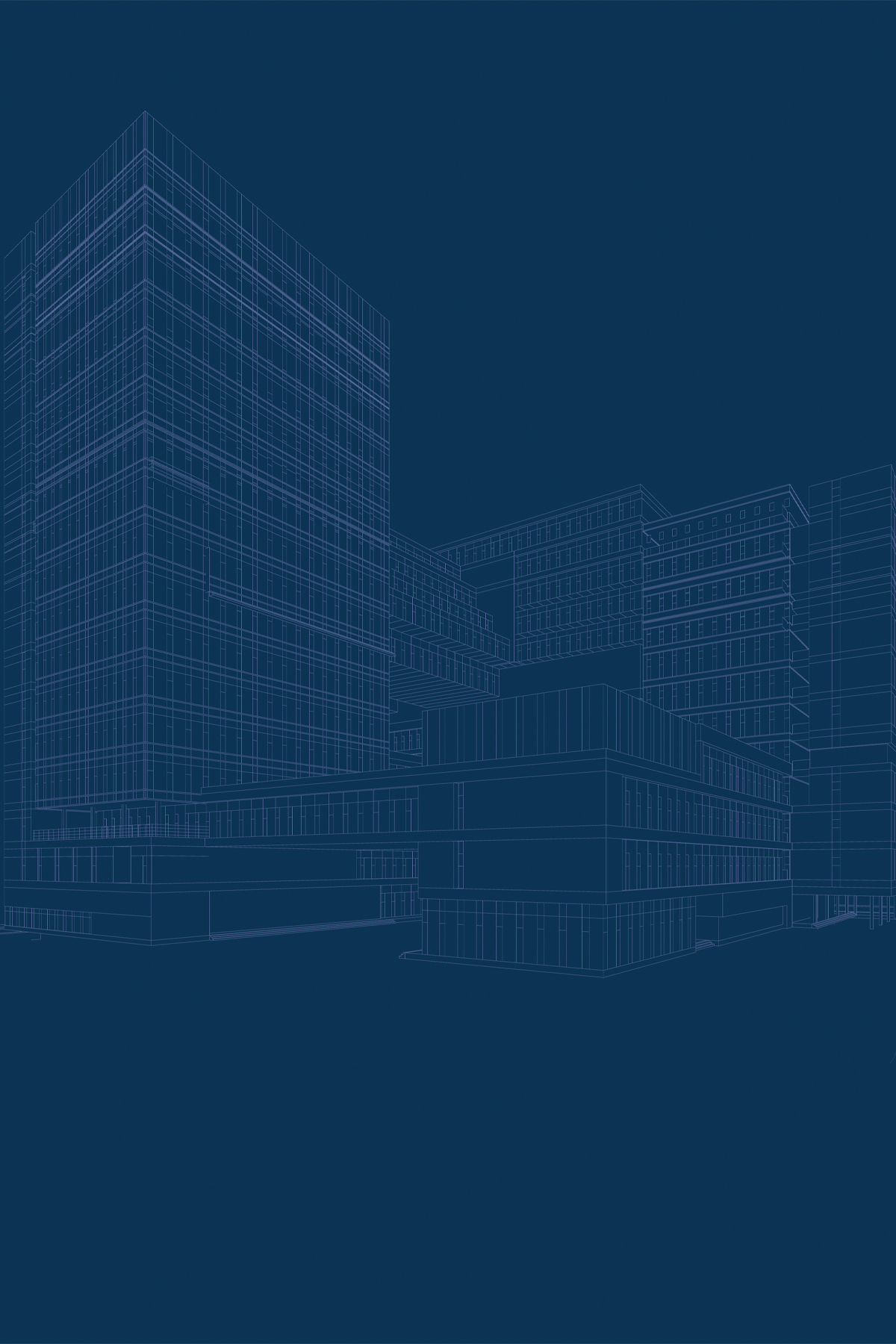Patient preferences, design, and technological advances are critical considerations as hospital operators continue to seek the most innovative ways to care for their patients. Hospital leaders, designers, and construction professionals contemplate everything from patient flow and electronic health records, to materials and hospital security to determine what’s next. Hospital operators and designers are in a uniquely challenging position. They work in an industry that is heavily regulated and notably not nimble, but innovation and societal issues constantly change what is feasible and desirable. The safety of patients and staff continues to be another issue that those who design and operate hospitals must consider, especially today. The future is incredibly bright in an industry where there are often more questions than answers. D CEO Healthcare recently assembled a team of experts to share insights about solutions to these challenges.
Paint a picture for us about some of the most significant changes you see on the horizon in the next 25 to 30 years.
Ashley Dias: I like to look out 25–30 years because that is when we’ll see some real paradigm shifts and generational change, which is exciting to me. In that amount of time, we are going to see significant technological advancement, but looking back in time as technology has evolved, what we have learned is that all the advancement of technology offloads from human tasks, allowing us to elevate our contribution. What that means in general for healthcare is that we’re going to be able to shift our focus on discovery and diagnosis toward care management in the relationship between the patient and the provider. So, what does that mean for space? We are starting to see immersive connectivity, and digital augmentation, for instance, is on the horizon. The predictability of AI is going to change spaces, but let’s talk specifically about an exam room or patient rooms—what are those going to look like? They are now focused on examination, discovery of analytics, and understanding diagnosis. They will be able to shift in the future to care management, treatment plan success, and the relationship. These spaces will be more comfortable, more focused on counseling and collaboration between the patient and the provider. I’m excited about these spaces because I think they will be more comfortable. Other things that we’re going to see are changes to our logistics by way of robotics in our supply chain management. In 25 years, this is going to be normal. In addition to working in person, doctors will have offices in the metaverse. I like to use this example: In 30 years, we’re going to be designing departments that we’ve never designed before. I’ll use this made-up example to make the point: an anomathy. What’s an anomathy? It will be part clinical lab, part pharmacy, part biomedical engineering, and a nanotechnology makerspace. A combination of all those things will be a normal department 30 years from now. It is fun to think that far because that is where we will see some exciting change, but the theme is that we are going to get to
be more human, despite all the technology.”
“We’re going to be able to shift our focus on discovery and diagnosis toward care management in the relationship between the patient and the provider.”
Ashley Dias, Perkins & Will
How are you thinking about balancing welcoming design and hospitable space with the growing need for greater security in a hospital?
Jason Schroer: “One of our main responsibilities as architects is safety. It’s just part of what we are obligated to do in hospitals. So, we’ve always had this mindset of safety and infection control, things that are typical to what you think about in hospitals. Plus, things like proper exiting, and how you manage fires if they pop up. All those things are embedded in our learning, and in our DNA, and what we’re obligated to do by code. When you begin to think about what happened during COVID and the kind of additional threat of gun violence and other things that penetrate a lot of our buildings, we try to take some of the ideas that we already have in terms of containment. When you think about the analogy of a submarine, they’re designed in ways in which if they get punctured, they can seal themselves off and there’s only water in certain compartments. When you think about safety, it’s very similar in that regard in terms of how we design submarines. We start thinking about how we integrate those systems and exit doors, cross corridor doors. Where can we begin to think about containment? If there’s an incident in the emergency department, we begin to look at containing that incident to that location. There are ways in which we can build our systems where those doors will lock so you can contain and separate. Now, where the idea of separation and hospitality interface, that’s a little more difficult to describe without pictures. But there are opportunities for us to try to find that balance between protection separation and still provide a hospitable experience. We are seeing in our emergency departments we’re putting that initial check-in behind glass, but there’s ways in which we can do it where it still makes it seem as though that’s inviting and open. With a lot of our systems in hospitals, how do you put armed guards or police in those locations in a way that keeps it from being intimidating or creating anxiety for people.”
“There are opportunities for us to try to find that balance between protection separation and still provide a hospitable experience.”
Jason Schroer, HKS
Much of your work has focused on a single hospital that has been remodeled four to five times in your 20 years there. Talk about the factors that lead to these changes and a couple of examples of what changes were made and why.
Darron Black: “When you think about remodeling hospitals, there are several factors, including changes in laws, changes in staff, and changes in technology, but I think the first thing that comes to mind is what groups of physicians is the administration hiring? If they’re going to hire a new group of endocrinology doctors that are going to bring more procedures in, then we’re going to build more endocrinology suites. Those kinds of changes back and forth are why we have remodeled certain spaces four or five different times over the last 20 years. When you have a new facility, it is the brand-new shiny object, so the physician’s groups are wanting to book all those operating rooms, so now you’ve got a bottleneck in the sterile processing department trying to process all your instruments. Fortunately, we plan for that, so we build space for expanding those services.”
Your hospital was built in a unique way. Can you explain this and talk a bit about the advantages of going in that direction?
Kenneth Rose: “Our hospital was built in a unique way through prefabrication. As we were designing this hospital, we wanted it to be consumer-centric, and we wanted to be a hospital of the future. One of the things that The Beck Group told us was we should consider prefabrication as a part of our building process. At times, it can help with cost, but it always helps with efficiency. It means that parts of our building—and for us mainly it was patient room bathrooms—were built in an off-site warehouse put together completely to be almost functional. They just needed to be installed. It was all put together in one place, so it helps with labor. Much of our hospital was built in the middle of summer in Texas. If you were to do a construction job outside, would you rather do your job in construction or in an air-conditioned warehouse? When you’re trying to attract labor in the different trades to build these bathrooms, it’s an easy way to convince people that your project is a better project to work on. With all of our growth, these tradesmen are hard to find and are hard to book. Bathrooms and head walls were designed in a warehouse in Grapevine and then they were boat wrapped and put on 18-wheelers. They drove onto our property, were taken off the trucks, and craned up to the second floor where they were installed. The bathrooms were slid in, fit perfectly, and installed quickly. It kept us on track with our construction project. When we think about the future of healthcare, we need to look at other industries, how we consume things, how we receive things, and how we order things. Healthcare has got to get out of its own way and look at other industries that have figured out how to attract consumers and keep consumers.”
“Healthcare is moving into an age where we have to be more consumer-centric. We want to make sure we have an environment where people can heal.”
Kenneth Rose, Texas Health Hospital Mansfield
Shortages have plagued every aspect of the healthcare industry, and it isn’t a problem that’s going away any time soon. How are providers and design professionals thinking about addressing those issues, and how does it impact design?
Schroer: “When you think about hospital design—specifically patient units, nurse stations, and things like that—there are standard nurse-to-patient ratios that we’ve tried to plan around. When you think about where people must sit, their visibility, and those ratios, it impacts how you design those units. We are finding that we may have to start to rethink some of those ratios, and that will impact the design of our units. We even go into the science of walking distances and other things that we can measure based on testing out different layouts on floor plans. We can go into the field and measure if our designs supported giving nurses more opportunity to be bedside as opposed to walking and looking for meds, looking for supplies, and things like that. The other thing that we’re seeing, too, is integrating innovation and technology. Robotics are big in terms of trying to figure out what are certain tasks that can be mitigated, which is reinforced by shortages. We’re seeing that the caregiver average age is much lower than normal, and we have seen some innovative ideas around some systems. Some are convincing senior caregivers and saying they still want them on the team, but they are going to put the nurse in a command center to be available to all of our other nurses and caregivers in the system. Some systems have created a command center of more seasoned nurses as a safety net for their nurses within their system. It creates great mentorship opportunities.”
As CEO, you are concerned with improving outcomes via design. As the leader of a relatively new facility, how did the hospital incorporate design elements to promote healing?
Rose: “Healthcare is moving into an age where we have to be more consumer-centric. With our space, we want to make sure we have an environment where people can heal. Part of that healing is in family and connections, so you need rooms that can hold a spouse and maybe kids and parents where they can heal with the community, not just individually in small rooms. We’re done with double occupancy in healthcare. The other thing with space is natural light. Something that a lot of hospitals have done historically is what we call out-boarding of bathrooms, which moves the bathroom toward the exterior wall of the patient room, and it limits the amount of window space that you can have. With our hospital, we decided to inboard our bathrooms, which gave us larger windows and more natural light. It’s a basic thing, but it helps a patient when they’re there. We want it to feel more like home or a hotel.”
The hospital of tomorrow is often literally tomorrow. How have supply chain issues and increasing lead times impacted hospital construction?
Black: “Supply chain challenges are extending the overall durations and the final end dates of everything. With a lead time of 30 or 50 weeks out, we bring those to the client and say, ‘What is more important to you? Is it money, or is it quality, or is the time?’ The other thing we think about in our industry is that we like just-in-time delivery. A lot of our job sites don’t have any storage, so we want to order our products and have them arrive just in time so that they can go into the building and be installed. Nowadays, you don’t have that luxury, and you may or may not know, so if you have space on site, then you can get storage containers to store stuff and get it in early. If not, we need to start talking about upfront warehouse space, getting those products in, and storing them so that we can have them when we need them so that it’s not impacting the overall duration.”
Healthcare providers are increasingly focused on continuity of care and making sure patients stay connected to the healthcare system. How does that impact design and the space where patients exist?
Dias: “With the digital connection that we’re starting to get to our systems, it’s still figuring itself out. But hopefully, with digital connectivity to all the systems and opportunities, that will clarify as time marches on for us. What that means for design is that as it becomes clearer and we’re all educated more about where to go, we can spend less time as designers using architecture to clarify the healthcare continuum, and we can spend more time in the delightfulness of spaces. Daylight, biophilia, and art all deserve a great amount of design energy, and so the more that we can clarify the continuum, the more we can design delightful spaces. We’re not there yet, but I think that is the opportunity.”
Author








